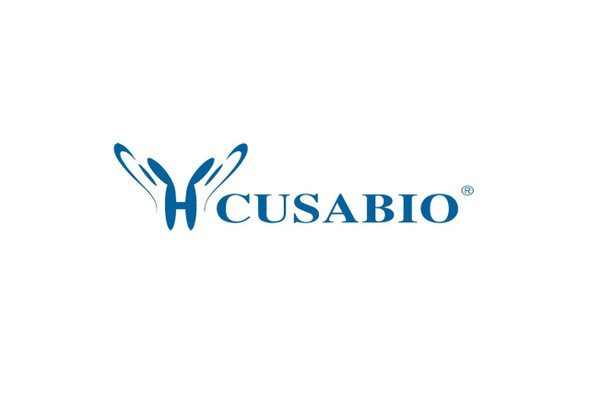Cusabio Polyclonal Antibodies
ATF5 Antibody, Biotin conjugated | CSB-PA002276LD01HU
- SKU:
- CSB-PA002276LD01HU
- Availability:
- 3 to 7 Working Days
Description
ATF5 Antibody, Biotin conjugated | CSB-PA002276LD01HU | Cusabio
ATF5 Antibody, Biotin conjugated is Available at Gentaur Genprice with the fastest delivery.
Online Order Payment is possible or send quotation to info@gentaur.com.
Product Type: Polyclonal Antibody
Target Names: ATF5
Aliases: Cyclic AMP-dependent transcription factor ATF-5 (cAMP-dependent transcription factor ATF-5) (Activating transcription factor 5) (Transcription factor ATFx), ATF5, ATFX
Background: Transcription factor that either stimulates or represses gene transcription through binding of different DNA regulatory elements such as cAMP response element (CRE) (consensus: 5'-GTGACGT[AC][AG]-3'), ATF5-specific response element (ARE) (consensus: 5'-C[CT]TCT[CT]CCTT[AT]-3') but also the amino acid response element (AARE), present in many viral and cellular promoters. Critically involved, often in a cell type-dependent manner, in cell survival, proliferation, and differentiation (PubMed:10373550, PubMed:15358120, PubMed:21212266, PubMed:20654631) . Its transcriptional activity is enhanced by CCND3 and slightly inhibited by CDK4 (PubMed:15358120) . Important regulator of the cerebral cortex formation, functions in cerebral cortical neuroprogenitor cells to maintain proliferation and to block differentiation into neurons. Must be down-regulated in order for such cells to exit the cycle and differentiate (By similarity) . Participates in the pathways by which SHH promotes cerebellar granule neuron progenitor cells proliferation (By similarity) . Critical for survival of mature olfactory sensory neurons (OSN), directs expression of OSN-specific genes (By similarity) . May be involved in osteogenic differentiation (PubMed:22442021) . Promotes cell proliferation and survival by inducing the expression of EGR1 sinergistically with ELK1. Once acetylated by EP300, binds to ARE sequences on target genes promoters, such as BCL2 and EGR1 (PubMed:21791614) . Plays an anti-apoptotic role through the transcriptional regulation of BCL2, this function seems to be cell type-dependent (By similarity) . Cooperates with NR1I3/CAR in the transcriptional activation of CYP2B6 in liver (PubMed:18332083) . In hepatic cells, represses CRE-dependent transcription and inhibits proliferation by blocking at G2/M phase (PubMed:22528486, PubMed:18701499) . May act as a negative regulator of IL1B transduction pathway in liver (PubMed:24379400) . Upon IL1B stimulus, cooperates with NLK to activate the transactivation activity of C/EBP subfamily members (PubMed:25512613) . Besides its function of transcription factor, acts as a cofactor of CEBPB to activate CEBPA and promote adipocyte differentiation (PubMed:24216764) . Regulates centrosome dynamics in a cell-cycle- and centriole-age-dependent manner. Forms 9-foci symmetrical ring scaffold around the mother centriole to control centrosome function and the interaction between centrioles and pericentriolar material (PubMed:26213385) .
Isotype: IgG
Conjugate: Biotin
Clonality: Polyclonal
Uniport ID: Q9Y2D1
Host Species: Rabbit
Species Reactivity: Human
Immunogen: Recombinant Human Cyclic AMP-dependent transcription factor ATF-5 protein (1-282AA)
Immunogen Species: Homo sapiens (Human)
Applications: ELISA
Tested Applications: ELISA
Purification Method: Antigen Affinity Purified
Dilution Ratio1:
Dilution Ratio2:
Dilution Ratio3:
Dilution Ratio4:
Dilution Ratio5:
Dilution Ratio6:
Buffer: Preservative: 0.03% Proclin 300
Constituents: 50% Glycerol, 0.01M PBS, pH 7.4
Form: Liquid
Storage: Upon receipt, store at -20°C or -80°C. Avoid repeated freeze.
Initial Research Areas: Epigenetics and Nuclear Signaling
Research Areas: Epigenetics & Nuclear Signaling






